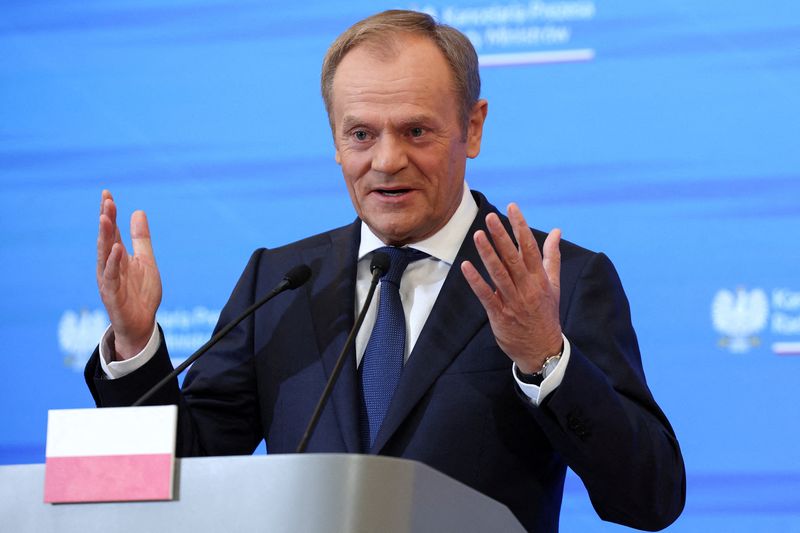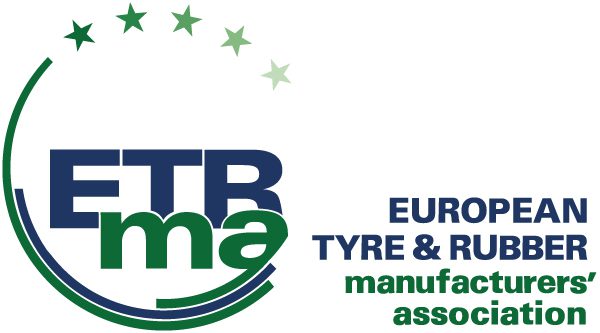
© Reuters. Poland’s Prime Minister Donald Tusk gives a statement after a meeting with European Commission President Ursula von der Leyen at the Chancellery of the Prime Minister in Warsaw, Poland, February 23, 2024. REUTERS/Kacper Pempel/File Photo
By Karol Badohal and Jan Strupczewski
WARSAW/BRUSSELS (Reuters) – Polish Prime Minister Donald Tusk has secured the release of funds worth up to 137 billion euros from the European Union, ending years of feuding with Brussels over democratic standards in a boon to central Europe’s largest economy.
Last December, a coalition of pro-EU parties took power, ousting the nationalist Law and Justice (PiS) party after eight years marked by frequent clashes with the European Commission, notably over judiciary reforms the Commission said harmed the independence of Polish courts.
PiS said the changes were necessary to make the system fairer and more efficient and rid it of vestiges of communism. It has accused the EU of using the funds to blackmail Poles into electing a government that’s more compliant to the bloc’s wishes.
In February, the EU welcomed Tusk’s plan to “restore the rule of law” and dismantle PiS’ policies. Poland now faces a tight end-August 2026 deadline to make the required reforms and spend a large chunk of the available funds to modernise its economy.
HOW WILL THE DECISION AFFECT POLISH ASSETS?
The economic impact will be spread out over several years, but the near-term benefit is already seen, with the Polish zloty blowing past a 4.30 per euro mark strategists recently projected on a 12-month horizon, scaling a fresh four-year-high on Monday.
The National Bank of Poland, which has held its main rate steady at 5.75% since October, has welcomed gains in the zloty, saying they help ease some inflationary pressures.
Yields on Poland’s five-year bonds traded around 5.16% on Tuesday, near levels hit last November following a rally from around 5.7% fuelled by investor optimism that Warsaw’s pro-EU turn could finally help release the funds.
Traders said market optimism over the renewed inflows was largely priced in, with attention turning towards the transfer timings and any additional conditions Warsaw will have to meet.
HOW MUCH OF THE RECOVERY FUNDS CAN POLAND GET?
The 137 billion euros ($149.6 billion), equivalent to 15.6% of Poland’s projected 2024 gross domestic product, include 60 billion euros to mitigate the impact of the COVID-19 pandemic and help EU members transition away from fossil fuels.
The 60-billion-euro recovery fund envelope consists of more than 25 billion euros worth of grants and nearly 35 billion euros of favourably priced loans.
Warsaw will also regain access to 76.5 billion euros in so-called cohesion funds designed to help raise living standards in the EU’s poorest members, which joined the bloc two decades ago.
Poland submitted its first payment request for recovery funds in December and said it planned to submit two additional payment requests merging the next four instalments by the end of this year, worth 23 billion euros combined.
HOW CAN POLAND SPEND THE FUNDS?
A revised plan approved by the EU in early December saw Poland, Europe’s most coal-reliant nation, spending just under half of its recovery funding on climate-related projects, including energy transformation towards renewables.
Poland’s new government is working on a further revision focusing on wind farms, increasing funds for thermal insulation of apartments, grants for school facilities and an additional 3 billion zlotys to support farmers.
HOW WILL THE FUNDS AFFECT POLAND’S ECONOMY?
Unlocking the recovery funds will boost Poland’s economy by about 2 percentage points in the long term, according to a report by Polish Economic Institute (PIE).
Although this impact will not be large in 2024, in 2025 it will account for about half of total investment growth and much of public consumption.
PIE estimates show that the recovery funds will lead to a 0.2 percentage point increase in Poland’s economic output in 2024, 1.2 points in 2025 and 0.6 points in the following years.
Polish Finance Minister Andrzej Domanski said the funds would add one percentage point to economic growth next year, lifting the pace of expansion to 3.5% after central Europe’s largest economy narrowly avoided recession last year.
WHAT ARE THE CHALLENGES?
Poland has just 2.5 years left to implement projects under the recovery plan that other EU members will have had around 6 years to complete, with even some countries accessing the funds from the start falling behind in commissioning projects.
The European Commission has not given any indication of how much money could be at risk with an end-2026 deadline set to use the funds, saying member states should “do their best efforts” to implement the required reforms and projects included in their national recovery plans.
Domestic hurdles could include PiS-aligned President Andrzej Duda’s possible opposition to Tusk’s reform drive, which could make it more difficult for Warsaw to overhaul the judiciary and pass other reforms, analysts at think tank Eurasia Group said.
(1 euro = 4.2984 zlotys)
($1 = 0.9158 euros)
Source: Investing.com



























